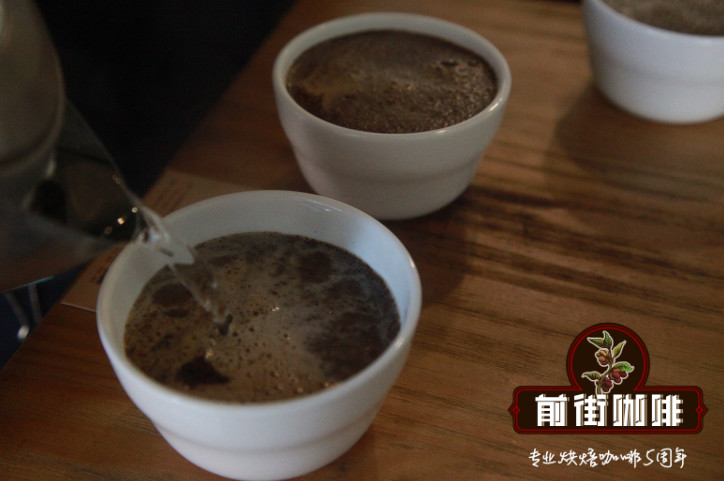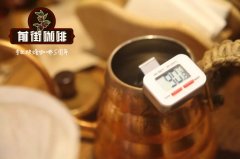The cutter head of the coffee grinder is also divided into metal material, chromium-molybdenum steel cutter head and ceramic cutter head.

Professional coffee knowledge exchange more coffee bean information please follow the coffee workshop (Wechat official account cafe_style)
NIVONA Coffee Machine, translated as Nivina Coffee Machine, NIVONA is headquartered in Nuremberg, the heart of Germany. In recent decades, the company has focused on the production of middle and high-end coffee machines, and the company has been committed to the design and marketing of innovative high-end coffee machines. Since the beginning of the establishment of the company, the company's products have been handed over to well-known professional production factories, which not only ensures the durability of the products, but also has deep technical guarantee.
If boutique coffee is a coffee revolution (at least some people in the boutique coffee industry think so. So there are difficulties and challenges, need to persist in exploration for a long time), then we need to study revolutionary weapons. This article, first published in roast magazine daily coffee news, briefly introduces the differences between the cutters of Italian bean grinders for boutique coffee lovers to learn from, by Chase Lemos.
Roast magazine invites people in the boutique coffee industry to share the knowledge of boutique coffee, elaborate opinions, publish experimental applications, and so on. Roast magazine is a platform for self-learning and mutual learning.
Not all Italian bean grinders have the same burr. The design of the cutter head of the bean grinder and the material can change the physical condition of the coffee powder. The cutter head has a service life, beyond which it needs to be re-polished or thrown away. The service life of the cutter head depends on many factors-the metal material, the geometry of the cutting surface, the size of the cutter head and the type of coffee being ground.
1. Metal material
Standard cutter head (standard burrs)
Most bean grinders are factory standard oil-quenched steel cutters (note: through different quenching methods and quenchants, such as oil, combined with tempering at different temperatures, the strength, toughness and fatigue strength of metals can be greatly improved) these are the most common types of cutters that can be identified by their gray appearance.
These standard cutters have a hardened layer and a soft "inner core". They can be thought of as MuggM chocolates, hard on the outside and soft on the inside. The hardened layer is difficult to protect the "inner core" forever. The service life of these cutters is determined by the hardened layer; once the hardened layer is worn and the grinding comes into contact with the softer internal steel, the cutter head will wear very fast until it needs to be replaced. The 64mm standard steel cutter head can grind about 650-750 pounds of coffee beans before it needs to be replaced.
Enhanced version cutterhead (the Extended Life burr)
The cutterhead that goes up one level is the so-called "enhanced" cutterhead (the Extended Life burr). The price of these cutters is reasonable and the service life of these cutters is longer than that of standard cutters. The enhanced version of the cutter head can be identified by the increased luster and more silver on the cutter head.
These cutters also have a hardened layer and a "soft"inner core". However, due to the use of high-frequency quenching in the process of quenching (high-frequency quenching hardened layer is shallow, high hardness, workpiece is not easy to oxidize, small deformation, good quenching quality, high production efficiency, suitable for parts working under friction conditions) this reduces the wear of the cutter head in the unit measurement range (coffee powder). The more advanced technology used to strengthen the hardened layer does increase the cost of the cutter head. The 64mm "enhanced" cutter head can grind about 1000-1100 pounds of coffee beans before it needs to be replaced.
Chrome-molybdenum steel cutter head
A further level of cutter head is chromium-molybdenum alloy steel cutterhead (Chromoly Steel burrs). The prices of these cutters are a little higher because the price of raw steel is higher than that of standard cutters and "enhanced" cutters. The advantage of this steel upgrade is that the cutter head is harder (it is mainly composed of chromium and molybdenum, the basic characteristics of this steel are high strength, high hardness, wear resistance, high temperature resistance). The 64mm chrome-molybdenum steel cutter head can grind about 1500-1600 pounds of coffee beans before it needs to be replaced.
D2 tool steel cutter head
(tool steel is described in Wikipedia as "carbon steel and alloy steel particularly suitable for making a variety of tools". Some data describe D2 as carbon (1.55), chromium (11.50), molybdenum (0.90), manganese (0.35), silicon (0.45) and vanadium (0.80).
D2 tool steel cutterhead began to enter the category of expensive "burning money". D2 tool steel has high hardness and high wear resistance. The disadvantage is that it must be heated to a very high temperature in the processing process. Manufacturers need special equipment to produce such cutters, which is part of the reason why such cutters are expensive. The 64mm D2 tool steel cutter head can grind 2400-2500 pounds of coffee beans before it needs to be replaced.
Titanium nitride (TiN) coated D2 tool steel cutter head
In order to make the cutter head more productive and useful, you have to start applying some super material to the steel surface. The most common is titanium nitride (TiN) coating. It is easy to identify and the cutter head is coated with gold (titanium nitride has metallic luster and can be used as a simulated golden decoration material).
In order to coat the cutter head with titanium nitride (TiN), the steel must be heated at high temperature, which will lead to the deformation of the cutter head of most steels. therefore, D2 tool steel cutterhead must be used. Titanium nitride has low friction coefficient, super hardness and wear resistance, which is significantly higher than that of ordinary cemented carbide. Titanium nitride (TiN) coating plays an additional protective role on D2 tool steel cutter head. The 64mm titanium nitride (TiN) coated D2 tool steel cutter head can grind 3000-3pm 1000 lb coffee beans before replacement.
Ceramic cutter head
The service life of the ceramic cutter head is similar to that of the titanium nitride (TiN) coated D2 tool steel cutter head (can grind 3000-3 thousand pounds of coffee beans). The remarkable difference between ceramic cutterhead and TiN cutterhead lies in the thermophysical properties of the material. Steel can hold a lot of heat, while ceramics can dissipate heat quite quickly (higher temperature than metal).
END
Important Notice :
前街咖啡 FrontStreet Coffee has moved to new addredd:
FrontStreet Coffee Address: 315,Donghua East Road,GuangZhou
Tel:020 38364473
- Prev

Coffee grinder cone grinding knife plate and grinding knife plate, what is the difference in the flavor of brewed coffee?
Professional coffee knowledge exchange more coffee bean information Please follow the coffee workshop (Wechat official account cafe_style) yesterday talked about how to grind the newly bought bean grinder. Today we have a comparison between the Hui family's ZD-10 and the usual bean grinder Forte-BG. Further confirm the degree of grinding and correct the grinding. Bean grinders can be divided into flat knives, conical knives and
- Next

What's the difference between hand-brewed coffee and siphon-pot coffee? And the extraction of siphon pots.
Professional coffee knowledge exchange more coffee bean information please follow the coffee workshop (Wechat official account cafe_style) hand-brewed coffee this way of brewing coffee, the prototype was invented by an Englishman named BIGGIN, because when coffee was introduced to Britain, at the same time the introduction of Turkish-style soaking method to make coffee, the British like coffee but do not like coffee very much
Related
- What is the Philharmonic pressure? How to use Philharmonic pressure to make delicious coffee
- Why does a hand grinder have more fine powder than an electric grinder?
- In addition to the hot mom, what is the difference between the versions of EK43 | ditting and Mahdi ek43?
- What kind of equipment do you need to make coffee by hand? Introduction to novice starter cooking equipment tools
- Espresso needs to be ground how thick and thin scale entry Italian Coffee Machine Bean Grinder investigation and Grinding course
- How much does it cost to open a small private cafe? How much does it cost to learn coffee? How to operate it?
- The difference between the flavor characteristics of hand-brewed coffee and coffee maker is hand-brewed coffee really better than coffee maker? Can I use a coffee machine to make coffee beans by hand?
- The difference between 01 and 02 of hario v60 filter cup what is the difference between 01 and 02 filter cup opening and cooking flavor
- What's the difference between the smart cup and the French kettle? Which is better, the French kettle or the Smart Cup?
- What's the difference between a smart cup and a V60 filter cup? The difference between the taste of smart cup and hand-brewed coffee

